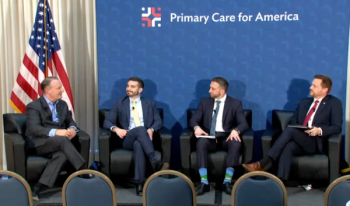
Vaccines in the post-COVID-19 world: Distrust amid promising developments
Key Takeaways
- mRNA technology holds promise for personalized cancer vaccines, but public confidence needs addressing.
- COVID-19 highlighted the need for robust vaccine distribution infrastructure and cold chain management.
At the Financial Times Global Pharma and Biotech Summit 2024, a panel discussed the potential of mRNA technology in developing cancer vaccines amid distrust from the public.
Vaccine R&D has always been an important part of healthcare, especially during the COVID-19 pandemic. In the post-COVID world, there are a number of investments being made in preparation of future pandemics, with mRNA technology showing promise in developing multiple personalized cancer vaccines. Despite the potential, pharma stakeholders must address the large number of people in the general population who have limited confidence in the ability of these vaccines.
At the Financial Times’ Global Pharma and Biotech Summit 2024, a panel of experts discussed these topics, including:
- Francesca Ceddia, chief medical affairs officer, Moderna;
- Annaliesa Anderson, SVP, head, vaccine research and development, Pfizer; and
- Isabel Oliver, director general, science and research, chief scientific officer, UK Health Security Agency;
The panel discussed lessons learned as a result of the race for COVID vaccines, the next targets for vaccine R&D, and the potential for vaccines to tackle antimicrobial resistance.
Lessons learned
Beginning the conversation, moderator Michael Peel, science editor, Financial Times, asked Anderson what the biggest lessons in vaccination were that she learned during the pandemic.
“When one thinks about the pandemic and what we learned about it, the first thing is that we’ve been making vaccines for a long time, and we have a specific structure where we start from the beginning and finish at the end, all within one organization,” said Anderson. “But when a pandemic happens, what you really learn is it really kind of tests out that infrastructure and you learn where the pieces you need to batten down on are. With COVID, one of the things that we saw was around distribution and cold chain, and really having to ramp a lot of that up.”
Data and vaccine development
Peel then turned to Oliver, who spoke about public health policy and how data will influence vaccinations going forward.
“We saw the possibilities and success of the vaccines during the pandemic,” said Oliver. “What was critical at the time was that everybody had a single objective. That success was built on years of investment in R&D, so that’s one of the lessons that is important to sustain a good investment in R&D. For us, one of the key lessons, being a public health organization, is the importance of partnerships with the industry as well as academia.”
The importance of partnership
Oliver elaborated on the importance of these partnerships moving forward and how this collaboration has evolved over time.
“I think it’s fair to say that in the past, public health organizations haven’t always worked closely with the industry, but if we want not just the vaccines, but the diagnostics and the therapeutics that we know we need to protect health from current or future threats, we need to work with industry partners and that means a different approach to partnerships with a common interest in mind,” she said.
The mRNA promise
Peel then asked Anderson to discuss the main targets that Pfizer is currently looking at with mRNA technology and what trends are being seen across the industry.
“At Pfizer, we have a very simple philosophy; we tend to look at where’s the biggest medical need, particularly for things that are causing severe infections,” said Anderson. “From there, we ask if there is a technical path forward, and there's not always a technical path forward. [Respiratory syncytial virus (RSV)] is a great example of that and the fact that for over 60 years, people were trying to develop a vaccine and then with advances in structural biology and design that was able to be applied to actually make antigens that were much more likely to provide protection, there are now a number of RSV vaccines that are available.”
Newsletter
Stay informed and empowered with Medical Economics enewsletter, delivering expert insights, financial strategies, practice management tips and technology trends — tailored for today’s physicians.


















